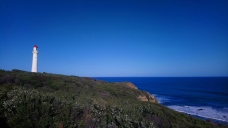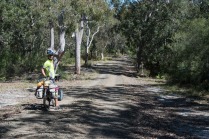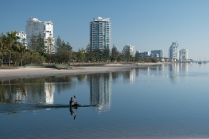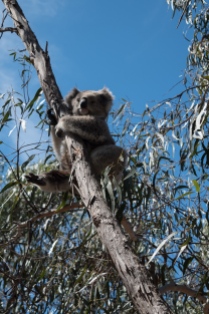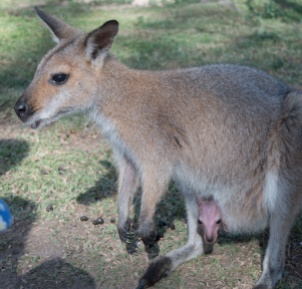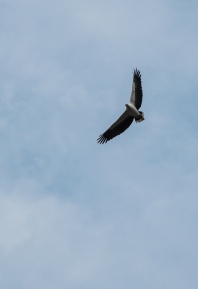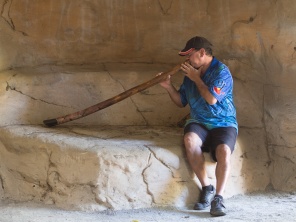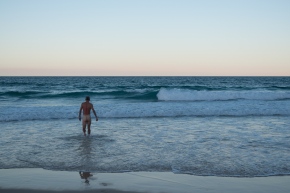(The day before this post we showed most of our Australia photos separately, here)
On a whistle stop tour of Brisbane we saw, nestled between the gleaming glass, chrome and concrete monoliths, red brick relics of bygone times. Churches and municipal buildings that document the Victorian birth of many of these towns. Staying in Sydney a little bit longer we delved beneath the high rise towers to find rows of terrace houses, churches, and curious institutes. That, together with the numerous parks, gave the place a spacious feel despite the flyover, and tunnel being built, to cope with the volume of traffic. Melbourne, with intimate lanes where eateries spread out across the road and waiters dance between pedestrians, also feels spacious with wide roads that accommodate tram lines, cycle lanes and cars. A pleasant mix of the old and new that have plenty of space to blend. And some very British (but better) public provision of toilets, benches, parks etc.

But it hasn’t been the history or lack of it that has been an inspiration in Australia but the abundance of wildlife; multitudes of marsupials that we’ve never seen before. The dazzling variety of birds swooping about, deafening at times. Flying foxes, echidna, wallabies and kangaroos, hump back whales and the occasional sighting of our immigrant friends rabbit, stoat and weasel. We finally, days before leaving, after many hours cycling with our necks craned up, genuinely saw a koala in the wild. We’d already visited Raymond Island’s koala tourist trek to tick that box, but it was awesome to see one snoozing in a mainland tree.

Having travelled for many months through Asia and South East Asia where, in rural areas especially, traditional methods of fishing and farming were still very evident, I was keen to see aspects of indigenous people, but we’ve had to seek out aboriginie heritage centres to get a view of their past, present and future. Sydney Museum spelt out the conflict and massacres that took place between the invading whites and the aboriginal people, while Rockhampton cultural centre and Melbourne Museum focused on the traditional way of life. The pride of the indigenous people was evident with videos showing younger generations learning traditional skills.

Mosaics were on display at the Eden Killer Whale Museum
We’ve also had conversations with many Australians, and learnt more that way. I was going to write that having in-depth discussions in English is also a novelty, after so long. But we met adept English speakers in India, Thailand and Singapore. Perhaps the difference is our willingness, maybe also the locals’ too, to discuss difficult issues.
While combine harvesters, trains and trucks have replaced Asia’s scythes, oxen and carts in Queensland’s sugar cane production, if any aboriginal people have managed to cling onto traditional ways of life it will be way out in the dry centre and west, well hidden from tourists like us. That’s one thing I suppose about the sort of life presented in books like “Walkabout” – it creates an association between aboriginal life and harsh land, whereas one thing that’s now clear to us is that the best of that life was in the good lands, such as we’ve been through, that our invaders nicked for farming.

It isn’t difficult to see how conflict has arisen as European values of exploiting the land with intensive and commercial farming, logging or miners culling the land before moving on are in direct conflict with aboriginal beliefs and practises that sustained flora and fauna. The land being ‘sacred’ – look after the land and the land will look after you.
Koalas, one iconic Australian animal, are doomed if the current rate of deforestation continues. 15 years, we were told, until loss of habit will result in no more koalas in the wild. Aborigines, however, made tree bark canoes from trees where, in time, the bark grows back, just one example of where they use the environment without destroying it.

The history of the aboriginal peoples connection with the land is displayed on information boards at key locations that explain the importance of each site often stating that it had been significant sight for 40000, 50000 or 60000 years. Never do they tell of the 200 hundred years it took to destroy it.
Of course, said “European” values didn’t just affect the Australian Aboriginals, this was the era of the Scottish Highlands clearances, Irish potato famine, Napoleon and Bismark invading everywhere, and colonies. Brutish dog-eat-dog behaviour at all levels. But in the British Empire, it does seem the Australian Aboriginals were uniquely ignored, politically, as in the other new lands, the indigenous population was formally recognised – although still shot, infected, or driven out. In Australia, the indigenous population were explicitly not people but listed as fauna until 1967. Yes, Nineteen. The image of aboriginal people in a line depicting Australian fauna at Sydney Museum has, in very recent years, been removed.
Whilst the east coast has certainly got it’s fair share of hills to pedal up and down which by the end of a day is knackering, the coastal views are breathing taking. Endless expanses of golden or white beaches as far as the eye can see. Red cliffs, Clifton Sea Bridge and numerous bays with blue sea contrasted by ripples of waves were highlights along the way. As we moved south into Victoria, the land became greener and more convoluted.
‘Git ou’ the waaay”. It took a moment or two for me to decipher this advice growled at us from a vehicle as it passed, but it was one of the least offensive we’ve received. Australia has been the first country were there has been occasional direct hostility towards us as cyclists, as well as a lot of truly dreadful passing. We’d read about this, and especially the road trains, online. It does seem that a lot of Aussie drivers, especially truckers, would rather trust to luck on blind bends, than ease off the loud pedal. Aussie truckers are probably the near-worst drivers we’ve encountered, after Indian bus drivers and their Indonesian colleagues. The notorious road trains didn’t seem especially bad, probably because they’re only on relatively empty roads with few bends.
One of the problems, we think, is over ambitious claims or misconceptions about the cycle tracks which may lead car drivers to consider that we are well provided for. Well, provided for we are by: disjointed, frequently poorly maintained, unsignposted and, at roundabouts in Cairns, the outright dangerous positioning of a cyclist should we use it. Sometimes we can use the hard shoulder, but it doesn’t always exist, and oftimes seems to have been deliberately ruined with road features placed down the centre of it. The concept of cycle tracks is a good one but they have to prove useful to cyclists. In the city of Newcastle they were, but elsewhere a lot of the facilities, as in England, had an air of local authority quota filling, and especially, almost no direction signs. Locals only, perhaps. But further south in Victoria, a series of rail trails have made very pleasant and productive traffic free cycling. Overall, in terms of road safety and comfort, most things improved steadily as we worked our way south.
Much more pleasantly memorable are the many helpful, friendly and very supportive folk who have stopped on their way, to give us gratefully received advice on better routes or attractions in the area. One such lady had us back track half a kilometer, head this way then that until we found an old mining road. It was right where the map displayed it but had failed to list it as a cycle track and too many such dirt roads aren’t suitable for our narrow tyres. Gebber Road, as it was called, was a good quality dirt road that took us through beautiful woodland (with numerous sightings of goanna, and a fine snake), past fields and mangrove swamps before emerging, several hours later along another small coastal road on our way to Tea Gardens (yes, that’s its name).
Yet more memorable are the folks we’ve stayed with, from Warm Showers, friends of friends, and folk we met on the road. Always interesting to talk to, too. Nick, Andrew, Mitch & Tanya, Grant, Bernie, Tony & Laurelle, Kirsten & Warwick – thank you all.
We’ve had plenty of moments where we’ve felt we weren’t going to cover the distance from Cairns to Melbourne within our three month visa. But, we’ve made it with time to spare managing to see many chosen sights along the way, and as so often, learning at least a little about the land, its wildlife, and its people.

























